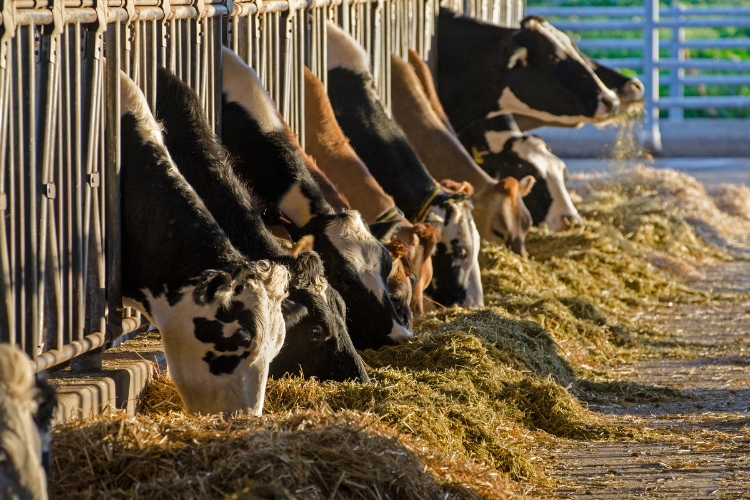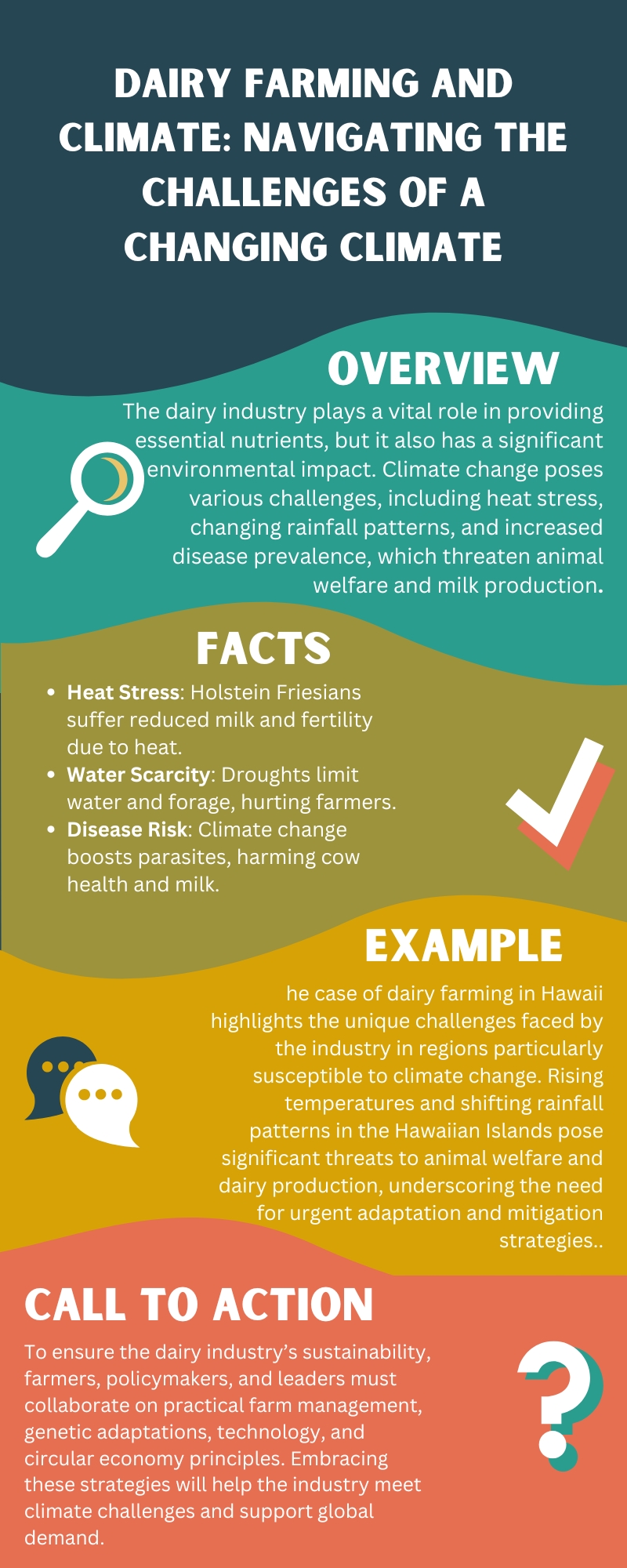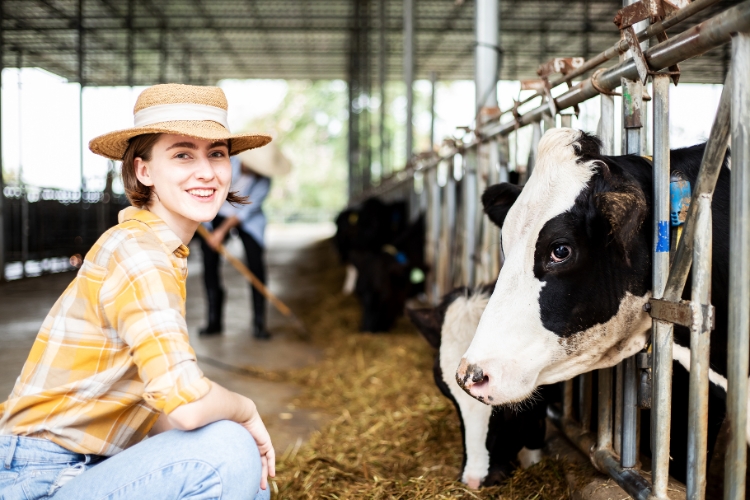The global dairy industry is vital in providing essential nutrients through milk and dairy products.
Driven by factors such as population growth, urbanization, and evolving dietary preferences, particularly in regions like China and India, the demand for dairy products is experiencing a continuous surge worldwide.
However, this growth comes at a cost, as the dairy industry has a substantial environmental footprint, contributing significantly to the pressing issue of climate change.
In this blog article, we will discuss the intricate relationship between climate change and dairy farming, exploring the multifaceted impacts, the adaptations and mitigation strategies that are shaping the industry’s future, and the importance of a sustainable approach to ensure the long-term viability of this essential agricultural sector.
Table of Key Adaptations and Mitigation Strategies!
| Strategy | Description |
|---|---|
| Farm Management Practices | – Providing shade, ventilation, and cooling systems in barns to alleviate heat stress
– Implementing efficient water management techniques (e.g., rainwater harvesting, irrigation management) – Adjusting feeding practices by utilizing drought-tolerant forage varieties |
| Breeding and Genetic Adaptations | – Selective breeding for traits that enhance heat tolerance and disease resistance in dairy cows
– Creating more resilient dairy herds to adapt to changing climate conditions |
| Technological Innovations | – Adopting precision livestock farming techniques for monitoring and optimizing resource use
– Investing in climate-controlled barns and advanced cooling systems to mitigate heat stress |
| Policy and Industry Initiatives | – Advocating for financial incentives and subsidies to encourage sustainable practices
– Promoting research and development efforts focused on climate-resilient dairy farming solutions |
| Sustainability and Circular Economy | – Implementing manure management and biogas production to reduce greenhouse gas emissions
– Minimizing food waste across the dairy supply chain to improve overall sustainability |
Climate Change Impacts on Dairy Farming
Climate change presents complex challenges for the dairy farming industry, affecting various aspects of the production process.
1. Heat Stress
One of the primary concerns is the impact of rising global temperatures, particularly on dairy cows. The predominant Holstein Friesian breed widely used in dairy farming is highly susceptible to heat stress.
As global temperatures continue to rise, especially in lower-elevation regions, heat stress becomes an increasingly critical issue for dairy farmers.
Heat stress can have a significant negative impact on milk production, reproductive performance, and overall animal health. This, in turn, results in substantial economic losses for dairy farmers, who must grapple with declining milk yields and the associated consequences.
2. Changing Rainfall Patterns
Climate change-induced alterations in precipitation patterns also have a profound impact on dairy farming. Changes in rainfall, such as droughts and unpredictable precipitation, can severely affect water availability for livestock and forage production.
Reduced forage availability leads to increased production costs and can even result in farm closures in severely affected regions.
The unpredictability of rainfall also disrupts seasonal grazing patterns, requiring dairy farmers to adapt their pasture management practices accordingly.
3. Increased Disease Prevalence
The warming temperatures and changes in humidity associated with climate change are likely to escalate the spread of existing livestock diseases and introduce new threats.
Favorable conditions for the proliferation of parasites and pathogens can increase disease risks for dairy cows, further compromising milk quality and quantity, and adding to the economic burden on dairy farmers.
4. Economic Impacts
| Economic Impact | Climate Change Factor | Consequences |
|---|---|---|
| Declining Milk Production | Heat stress, water scarcity, and changing growing conditions | Reduced milk yield, leading to decreased income for farmers |
| Rising Input Costs | Increased costs for feed, energy, and water | Higher operational expenses, putting pressure on profitability |
| Income Loss | Environmental concerns (e.g., droughts, extreme weather) | Loss of revenue due to reduced farm productivity |
| Market Instability | Unpredictable climate impacts | Fluctuating milk prices and market uncertainty |
Adaptations and Mitigation Strategies
To address the challenges posed by climate change, the dairy industry must embrace a range of adaptations and mitigation strategies.
1. Farm Management Practices
Dairy farmers can adopt practical strategies to alleviate heat stress in their herds. These include providing shade, ensuring adequate ventilation, and implementing cooling systems in barns.
Efficient water management techniques, such as rainwater harvesting and irrigation management, are essential to combat water scarcity. Additionally, adjusting feeding practices by utilizing drought-tolerant forage varieties can help ensure feed availability even during periods of low rainfall.
2. Breeding and Genetic Adaptations
Selective breeding for traits that enhance heat tolerance and disease resistance in dairy cows is a promising avenue for adaptation.
By creating more resilient dairy herds, genetic selection can help the industry adapt to the changing climate conditions. However, genetic improvements take time, emphasizing the need for long-term breeding programs to address the ongoing challenges.

3. Technological Innovations
Technological advancements play a crucial role in climate adaptation for the dairy industry. Precision livestock farming techniques allow farmers to monitor animal health, optimize resource use, and implement targeted interventions.
Climate-controlled barns and advanced cooling systems are innovative solutions to mitigate heat stress and improve animal welfare.
4. Policy and Industry Initiatives
Government policies and industry-led initiatives are indispensable for supporting climate adaptation and mitigation in the dairy sector. Financial incentives and subsidies can encourage farmers to adopt sustainable practices, such as renewable energy production and manure management.
Furthermore, promoting research and development efforts focused on climate-resilient dairy farming solutions is crucial for long-term sustainability.
5. Sustainability and Circular Economy
| Aspect | Circular Economy Strategy | Environmental Benefit |
|---|---|---|
| Biomass & Nutrient Management | Efficient management of biomass and nutrient flows | Reduces waste, improves soil health, and lowers fertilizer usage |
| Anaerobic Digestion of Manure | Produces biogas from manure | Reduces greenhouse gas emissions and generates renewable energy |
| Energy Flows | Integrating renewable energy sources (e.g., solar, wind, biogas) | Lowers carbon footprint and enhances energy self-sufficiency |
| Food Waste Minimization | Reducing waste across the entire dairy supply chain | Decreases resource consumption and reduces emissions from waste |
Case Study: Climate Change and Dairy Farming in Hawaii
The Hawaiian dairy industry provides a striking example of the unique challenges that climate change presents to dairy farmers, especially in tropical regions.
1. Key Challenges:
- Rising Temperatures: Increased heat stress on dairy herds, affecting milk production and animal welfare.
- Shifting Rainfall Patterns: Water scarcity is becoming a growing concern for farms already managing limited resources.
- Increased Disease Risk: The tropical climate and changing weather patterns elevate the potential for livestock diseases to spread.
2. Adaptation and Mitigation Strategies:
- Climate-Controlled Barns: Providing relief from heat stress, improving animal health and production.
- Precision Farming Technologies: Maximizing efficiency in water and feed management to reduce waste and increase resilience.
- Renewable Energy Integration: Using solar, wind, and other renewable energy sources to make farms more sustainable and energy-efficient.
3. Collaboration for Solutions:
- Policymakers, Industry Leaders, and Researchers: Working together is critical to developing and implementing comprehensive strategies.
- Sharing Best Practices: By learning from successful innovations, Hawaii can serve as a model for other regions facing similar climate challenges.
Hawaii’s experience demonstrates the importance of innovative approaches and collaborative efforts, positioning the dairy industry to thrive despite climate challenges.
Conclusion
Climate change presents major challenges to dairy farming, including rising temperatures, altered rainfall, and increased disease, all threatening animal health, milk production, and industry stability.
Addressing these requires a comprehensive approach—farm management, genetic adaptation, technology, supportive policies, and sustainability.
By acting proactively and collaborating across sectors, the dairy industry can mitigate these effects and secure a resilient future. The Hawaii case study highlights the urgent need for action.
As global demand for dairy grows, embracing innovative solutions and sustainability will ensure the industry thrives while supporting the planet and its people.





